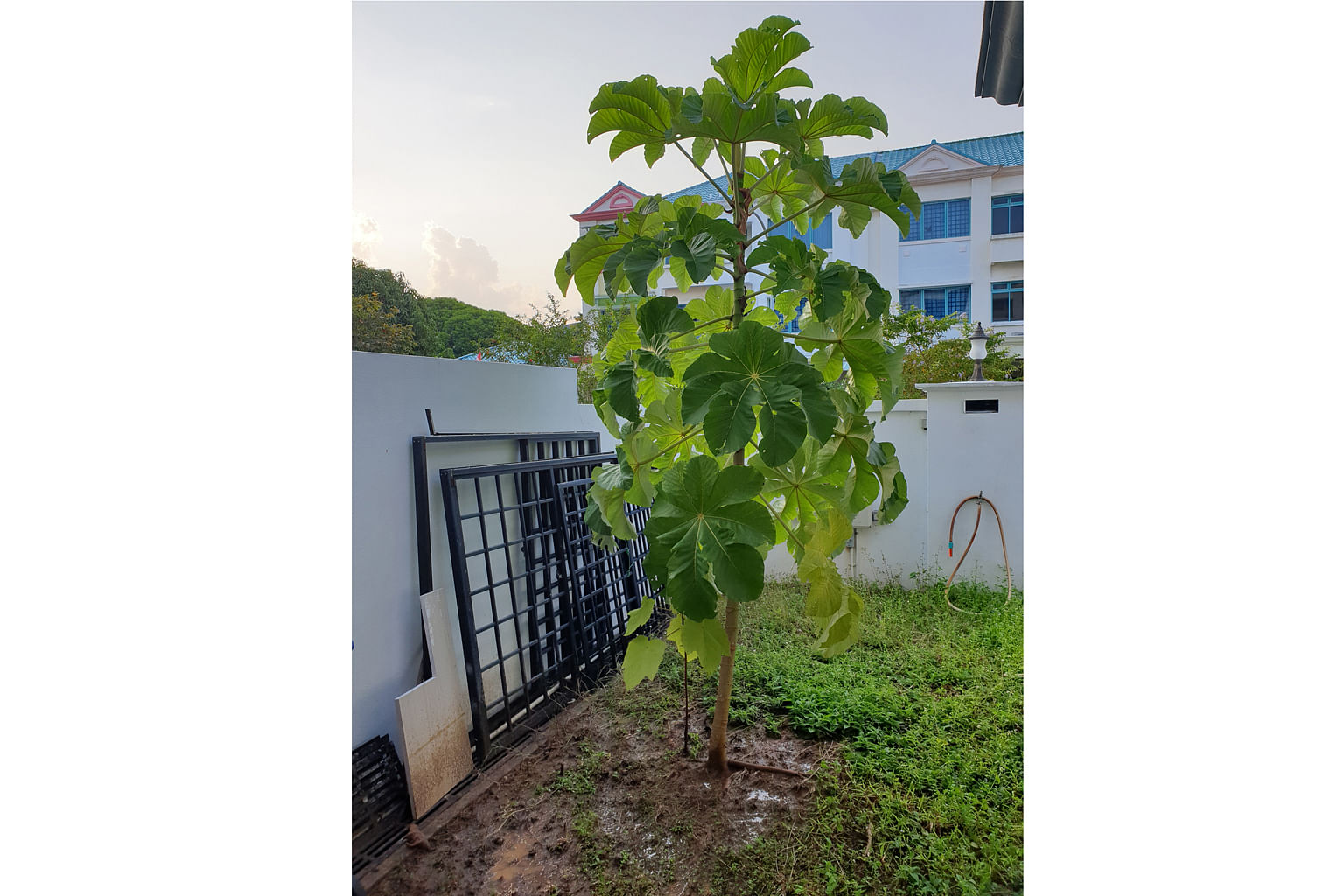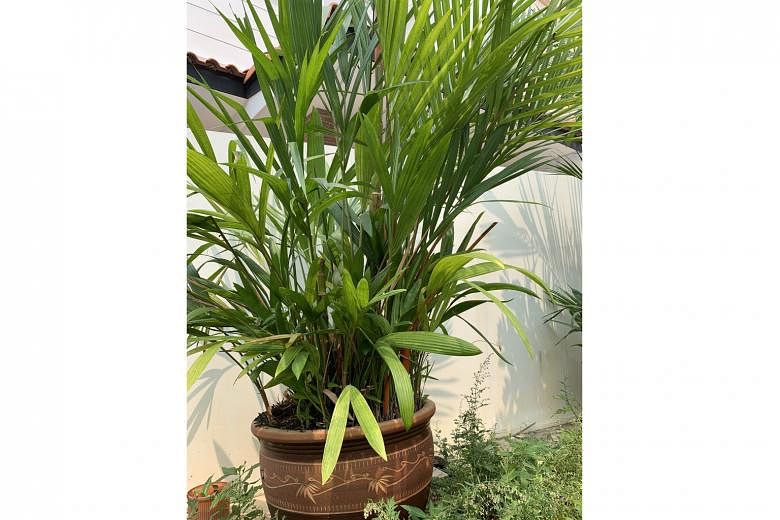Sealing wax palm can tolerate moist soil conditions
I have had this red palm (above) for several years. Recently, some of the new leaves look different from the original. Is it due to a deficiency? I am aware the pot has become too small for the plant, but I am unable to grow the plant in the ground as it is too damp. I am afraid the roots will rot. I have also been fertilising the plant with goat manure pellets.
Michelle Grace Jam
The palm is commonly called the sealing wax palm due to its striking red leaf sheaths. It is a native plant of Singapore and the emblem of the Singapore Botanic Gardens.
This palm grows naturally in moist soils in Singapore's swamp forests so it can be adapted to grow in the wet soil conditions in your garden. Do ensure it is well watered during the drought season.
The leaves of the new growth appearing at the base of the mother plant are normal. As the growth matures, it will split into the familiar-looking, pinnate leaf form that is characteristic of older plants.
Give your palm periodically a water-soluble fertiliser that contains potassium as well as a range of micro-nutrients, such as boron and manganese, that are required for healthy growth.

Ambay pumpwood an invasive tree species
The plant appeared as a small shoot in the garden. It grew to this size (above) in less than 12 months. What is it and does it have botanical values? How can I transplant it to a more suitable location?
Walter Ho Fook Kwong
The tree is known as the Ambay pumpwood. Its botanical name is Cecropia pachystachya. It is a type of pioneer tree and considered an invasive species. It often grows at sunny sites at the edge of forests or open wastelands in Singapore. Its leaves may look ornamental.
It can grow quite large and has hollow branches that snap easily. It may also attract ants.
Considering these factors, this tree species can be difficult to manage and may pose a hazard in a residential area. As such, it is best to remove it from your property.

Prune suckers of pomegranate to allow more light penetration
I grew this pomegranate plant (above) about three years ago. The spot where it is growing is very windy, but it is growing well and producing multiple suckers. What should I do with the suckers? How long would it take for it to bear fruit and how can I help it to do so?
Jamie Wen
The pomegranate plant (botanical name: Punica granatum) is a sun-loving plant and the lack of fruit can usually be attributed to the lack of sunlight.
Ensure the plant is not shaded by taller plants growing near it.
Also, avoid giving it nitrogen-rich fertilisers as this will prompt it to produce foliage over flowers.
If left alone, the numerous suckers appearing at the base of the pomegranate plant can lead to a very bushy plant.
An overly dense crown can impede sunlight penetration into the foliage of the plant.
Depending on the prevailing sunlight conditions at its growing area, you may need to prune the suckers so that the plant can have a more open crown. This will ensure a more even exposure of sunlight for the leaves.
• Answers by Dr Wilson Wong, an NParks-certified practising horticulturist, parks manager and ISA-certified arborist. He is the founder of Green Culture Singapore and an adjunct assistant professor (Food Science & Technology) at the National University of Singapore.
• Have a gardening query? E-mail it with clear, high-resolution pictures of at least 1MB, if any, and your full name to stlife@sph.com.sg. We reserve the right to edit and reject questions.

